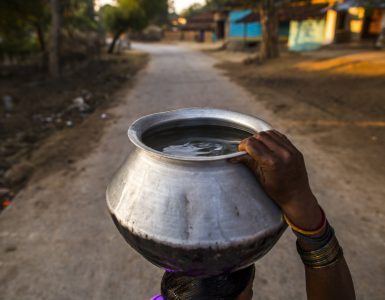The Bank of America Merrill Lynch estimates that the Indian government’s water infrastructure efforts would require $270 billion (about Rs 18.5 lakh crore) of capital expenditure over the next 5-15 year period.
This estimate includes last-mile water connections, the Ganga River clean-up effort, irrigation projects, and interlinking of rivers to redirect the resource to water-scarce regions.
The government’s Nal Se Jal scheme for piped water supply alone may need Rs 6.3 lakh crore, according to Brokerage firm JM Financial. For context, only 18.3 percent of rural households have piped water supply today.
Budget Cut
The Budget this year has allotted the New Jal Ministry has been allocated Rs 28,261 crores to achieve this goal. Budgetary allocation for the ministry has gone down by 9.4 percent. Even Namami Gange, which was a flagship program of the BJP after it came to power in 2014, saw a reduction of budgetary allocation from Rs 2,300 crore in 2018-19 to Rs 750 crore in 2019-20.
The Central Water Commission saw a reduction from Rs 443.49 crore to Rs 426.55 crore. The Central Ground Water Board saw a reduction from Rs 242.22 crore to Rs 229.45 crore from 2018 to 2019.
Major irrigation projects, including Farakka Barrage Project, flood protection works in eastern and western sectors and dam rehabilitation and improvement program, saw a decrease in budgetary allocation from Rs 319.01 to Rs 209.38 crore. Meanwhile, the budgetary allocation for river basin management was reduced from Rs 226 crore to Rs 200 crore.
The only increase or key thrust of the budget was the National Rural Drinking Water Mission, which saw a budgetary increase from Rs 7,000 crore to Rs 10,000.66 crore from 2018-19 to 2019-20.
Old Hope Private Sector
This is why Private sector will need to pitch in. In an interview to a National Daily, Jal Shakti minister Gajendra Singh Shekhawat said the government is examining the public-private partnership model for water infra projects.
This includes BOT (build, operate and transfer), DBOT (design, build, operate and transfer) and the hybrid annuity model (HAM), the last of which successfully brought in private capital and ramped up the speed at which highways were built in India.
But there are risks to count too. While the government is looking for big bucks to sail its boat for the water infrastructure, businesses have an appetite for smaller projects which have lower risks. The government’s track record is one reason behind the dampened spirit.
Rickety water infrastructure especially water and wastewater treatment, or more specifically the principles on which the piped WSS technology is based have not seen any fundamental changes since the 1860s, when it was (re)introduced on a large scale. This means that even with deep pockets no one actually has any deep insight as to how can anyone make this happen, outside of blueprints that date back to pre-independence era.
Published with permission from iamrenew.com


Add comment